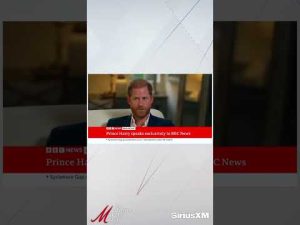In the ever-evolving world of medicine, new trends seem to pop up like daisies in spring. One of the most exciting buzzwords lately is “stem cells.” These remarkable cells hold the potential to revolutionize how we approach chronic illnesses, including heart failure, Parkinson’s disease, and diabetes. With millions of Americans grappling with these conditions, the interest in stem cell therapy is much more than just a passing fad—it’s a beacon of hope for many.
At the forefront of this exciting development is Doctor Chauncey Crandall, who leads the Palm Beach Clinic of Preventative Medicine and Cardiology. He shares his enthusiasm for the promising effects of stem cell therapy, recalling his own personal experience with a stem cell shot in his knee. Thanks to this treatment, he avoided surgery—proof enough for him that stem cells could be a game-changer when traditional treatments fall short.
So, what exactly are stem cells? They are known as the “mother of all cells,” and for good reason! Found predominantly in bone marrow but also in various other tissues, stem cells possess an incredible ability to differentiate into various types of cells. Whether it’s repairing skin or regenerating heart tissue, these cells can potentially return damaged areas of the body to their former glory. It’s like having a handyman who not only knows how to fix the leaky faucet but can also whittle a new chair from scratch!
However, the promise of stem cell therapy comes with caution. It’s essential to tread carefully in this exciting new territory, as unscrupulous treatments can sometimes pop up like weeds. Doctor Crandall emphasizes the importance of finding reputable providers since many people may fall prey to “snake oil” salesmen pitching deceptive treatments. The government regulates stem cell usage, and for those interested in exploring this potential path, resources like clinicaltrials.gov can be invaluable.
Despite the cautionary elements, the future of stem cell therapy brings genuine optimism. Doctor Crandall points out that patients dealing with heart failure may benefit tremendously from these therapies. In some cases, injecting stem cells into the circulation near the heart can lead to the regeneration of damaged tissue, helping heart function return to normal and potentially alleviating the burden of chronic heart conditions. It’s hard not to get excited at the thought of a treatment that could reverse such daunting health challenges.
In conclusion, while stem cell therapy holds tremendous promise, one must remain vigilant in choosing the right pathway to treatment. With advancements happening all around us and the right guidance from respected medical professionals, there is hope where once there seemed to be none. This journey into the world of stem cells could very well mark a significant step toward a healthier future for many Americans facing chronic ailments. It’s a brave new world out there, and stem cells might just be the frontiersmen guiding us through!







